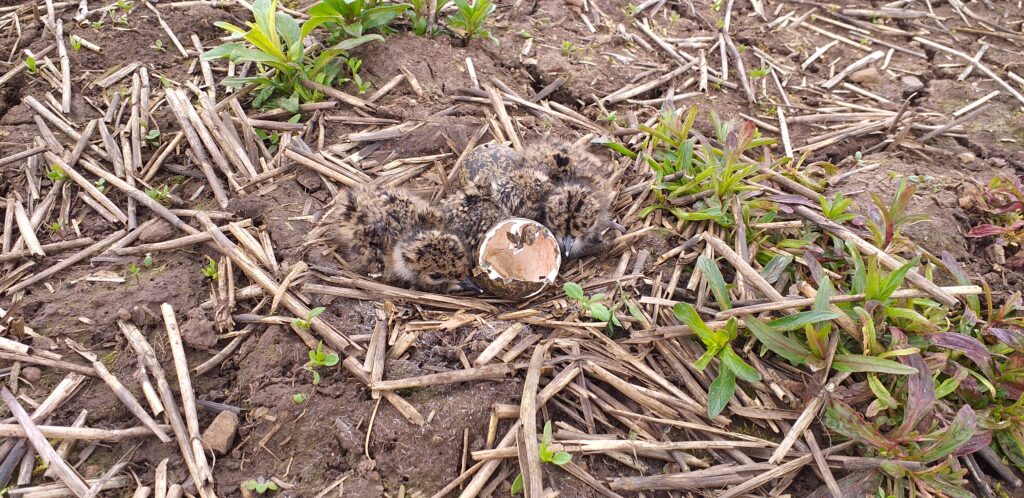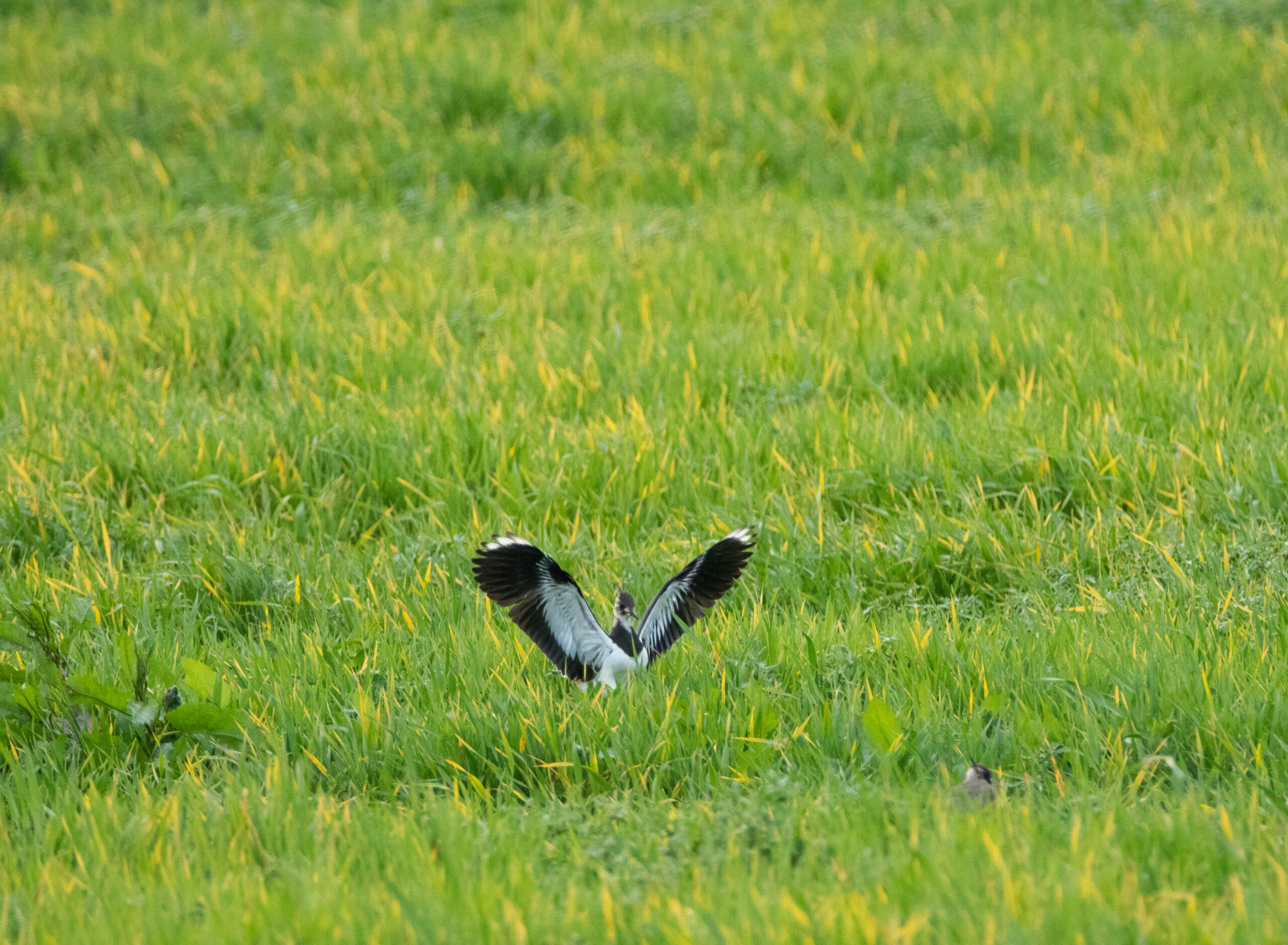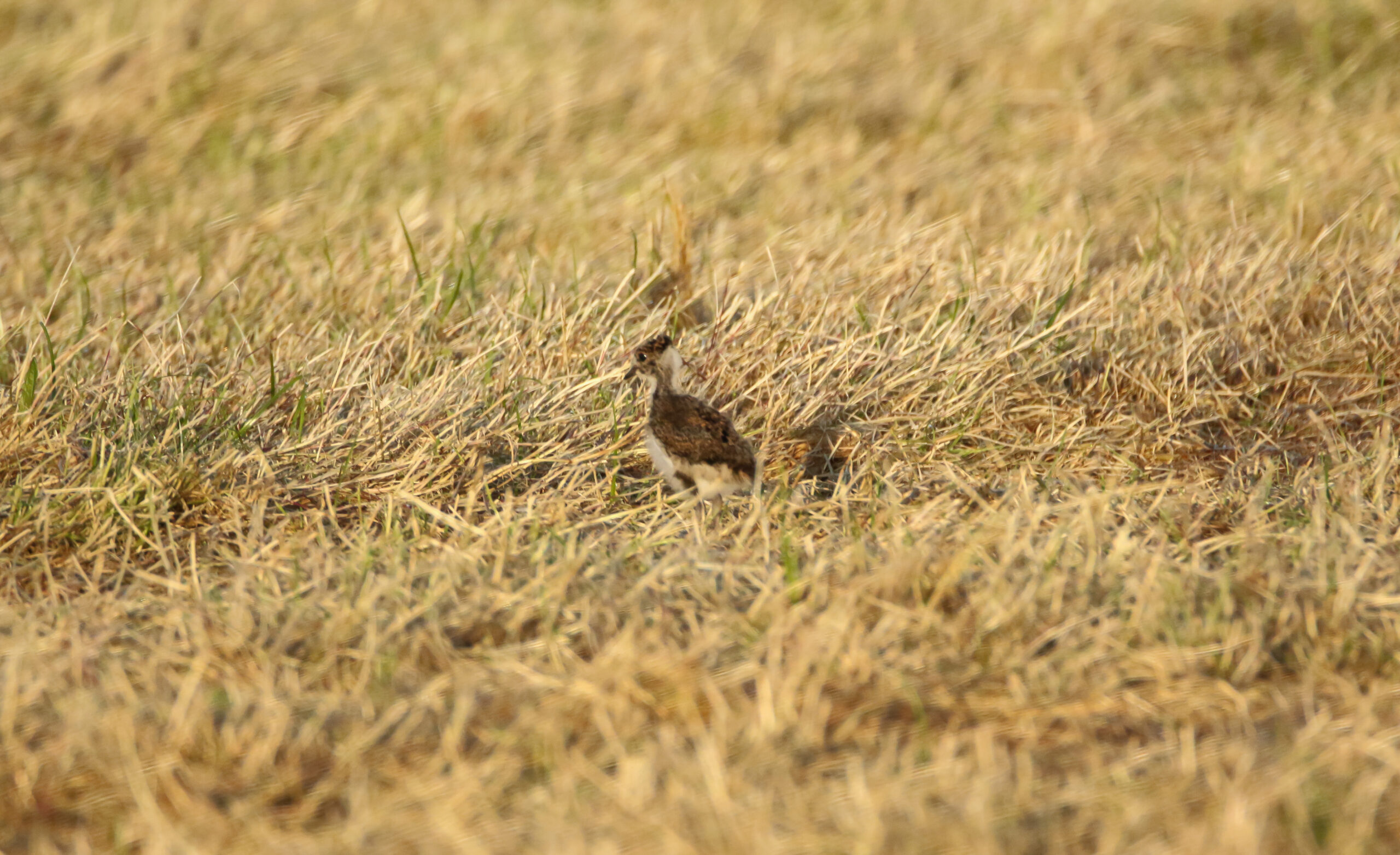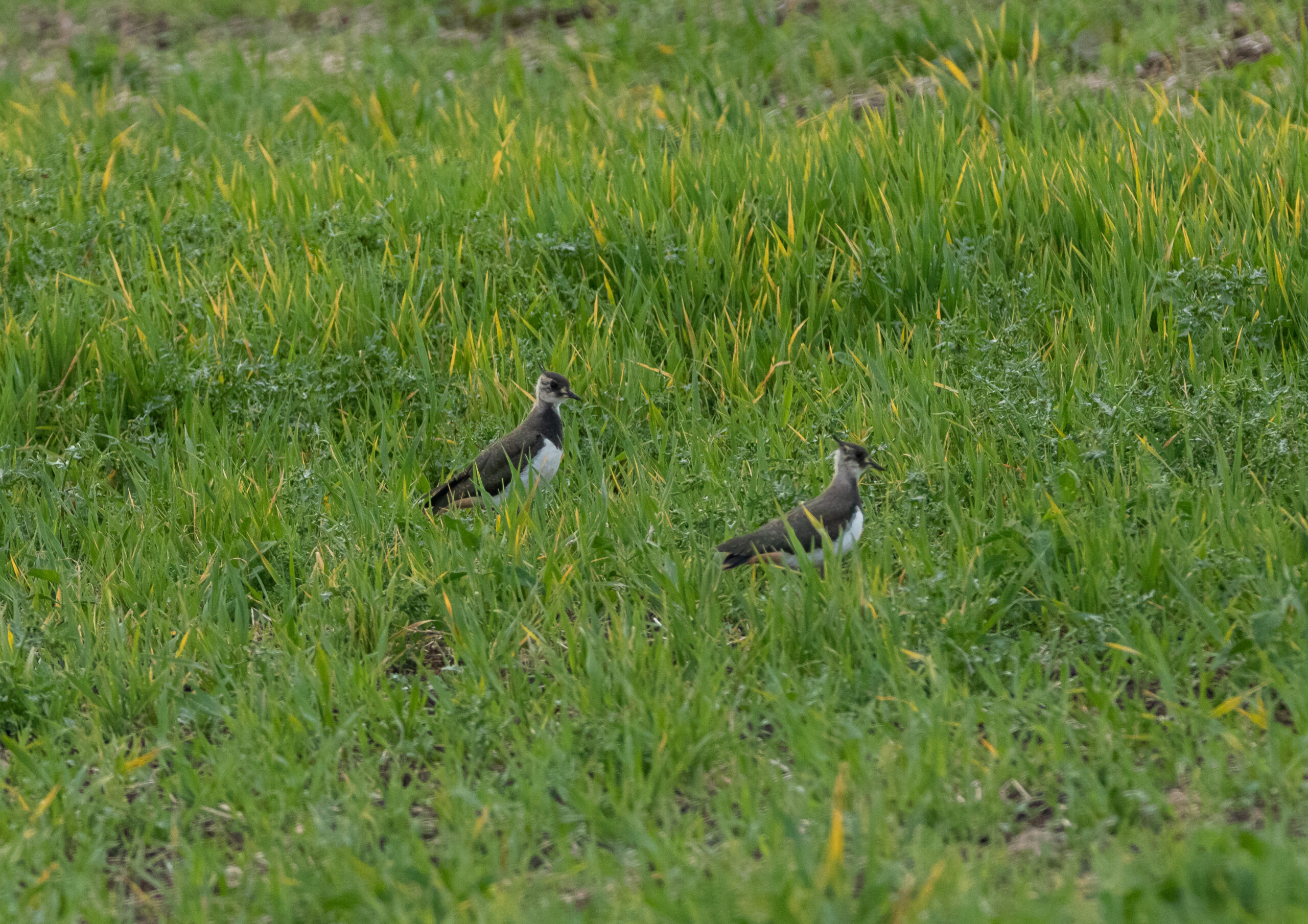Lowland Lapwing Project
The once common Lapwing (or Peewit) has suffered a population decline of 89% across the UK from 1985-2013. This is a common feature with most of our ground nesting birds.
Lapwings and their chicks feed on ground invertebrates primarily earthworms and larvae of beetles and leatherjackets but also any invertebrate close to the soil surface. Traditionally they would be seen on bare ground, nesting in spring cereals and moving to damp meadows to feed. As they nest on the ground they are vulnerable to predators, livestock trampling and machinery operations. Larger fields in damp areas with fewer trees and hedges that would provide cover and perch for predators would have been selected in the past. A key defence mechanism is the adults aggressive mobbing which is effective in driving off predators as long as there are enough adults in the group to be able to maintain this high energy activity.
Spring cropping within a grassland block where there is wet meadow or access to wide and shallow scrapes provides the mixed habitat which can maintain a viable population.
On a CAFRE beef out-farm of 30 hectares, two fields of minimum tillage have been maintained for over 5 years. The rotation has moved to routinely include spring cropping of either beans or barley and this alongside the wet meadows provides excellent habitat for lapwing.
Maintaining some spring cropping repeatedly within this grass block is the primary action which has resulted in an increase from previously one pair on this site to over 5 pairs and 17 chicks produced in 2022. Elements of predator control and taking some additional time and care during machinery operations are secondary actions.
Camera trap footage can be seen here:




